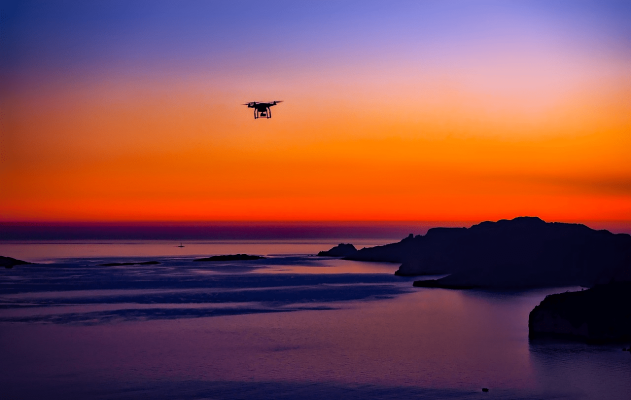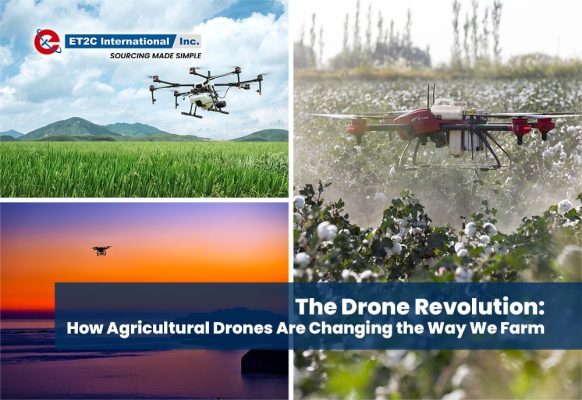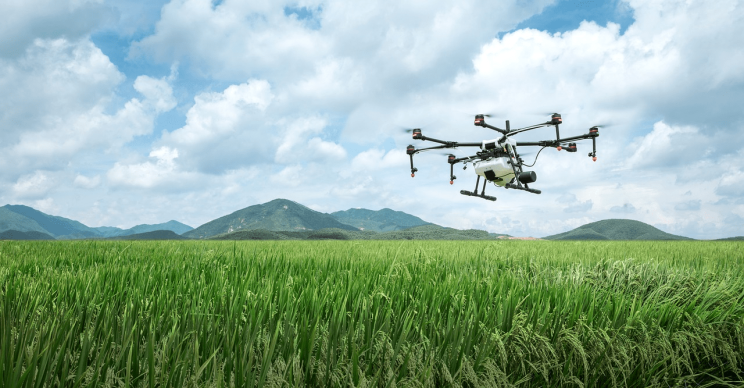The Growing use of Drone in Agriculture
In the ever-evolving landscape of modern agriculture, the buzz is not just from the bees but also from the increasingly prevalent hum of drones. Unmanned aerial vehicles, commonly known as drones, have swiftly become indispensable tools for farmers worldwide. Drones are rapidly moving from being high tech devices to vital tools on many farms supporting productivity and profitability for farmer and growers. Where is there use and adoption moving fastest and what factors will have to be overcome to continue to deliver strong growth across all regions. From improving crop yields to reducing costs, drones can help farmers to optimize their operations and produce more food with fewer resources.
The Rise of Agricultural Drones:
The agricultural sector is experiencing a technological revolution, and drones have emerged as a game-changing innovation. These aerial devices equipped with cameras and sensors are providing farmers with a bird’s-eye view of their fields, enabling them to make informed decisions, optimize resource use, and enhance overall efficiency. Starting as a way of doing easy and effective crop reviews, drones have rapidly widened their capabilities to be capable of spraying, pest control and precision agriculture large fields easily. This increased functionality together with technological developments have seen the the rapid adoption of drones across many regions but extended the capabilities of drones to be multi-functional.

Markets and Countries Leading the Adoption of Agri Drones:
- United States:
– The U.S. has been at the forefront of adopting agricultural drone technology. Large-scale farms in the Midwest, vineyards in California, and various crop producers across the country have integrated drones into their farming practices. The expansive agricultural landscape and the pursuit of precision farming contribute to the widespread adoption.
- China:
– China, a global agricultural powerhouse, has rapidly embraced drone technology in farming. The government’s support for technological innovation, coupled with the vast expanse of farmland, has fueled the adoption of drones for crop monitoring, pest control, and precision agriculture.
- Brazil:
– Brazil’s vast agricultural acreage, including extensive soybean and sugarcane fields, has made it a key player in the adoption of agricultural drones. Brazilian farmers leverage drones for crop monitoring, assessing soil health, and optimizing irrigation practices.
- Japan:
– Japan, with its tradition of technological innovation in agriculture, has been an early adopter of drones. Farmers use drones for tasks such as rice planting, spraying pesticides, and monitoring crop health in terraced fields.
- Australia:
– Australian farmers, facing challenges like drought and vast expanses of land, are turning to drones for water management, crop monitoring, and livestock surveillance. The country’s progressive approach to precision agriculture has driven rapid adoption.

ET2C International Global Sourcing Experts for twenty years
ET2C International has for over twenty years played a crucial role connecting global brands and companies with sourcing partners. Our expertise in global sourcing can make sure you get all the benefits of sourcing Robotics, Industrial and Agricultural products from China and Asia without any of the risks. Over 70% of all Agri Drones are manufactured in China making a selection of the right factory partner a crucial plank of any sourcing strategy.
Our 250 colleagues are based in offices in seven key Asian sourcing markets including to make your global sourcing simpler. Where language, time zone or business communication practices can make things difficult, out team will be your bridge to your suppliers.
At ET2C our history of delivering the benefits of global sourcing to our clients enables businesses to quickly and easily connect with factory partners who can deliver your product requirements and importantly your quality and compliance requirements.
Growth trends driving rapid adoption of Agri Drones
- Precision Agriculture:
– Drones provide farmers with high-resolution imagery, enabling precision agriculture. This involves tailoring farming practices based on specific conditions, optimizing resource use, and minimizing environmental impact. Improving productivity and profitability on every farm.
- Crop Monitoring and Health Assessment:
– Drones equipped with advanced sensors capture real-time data on crop health, identifying areas affected by pests, diseases, or nutrient deficiencies. This allows for targeted interventions, reducing the need for broad-scale treatments.
- Efficiency and Time Savings:
– Drones cover large areas quickly, saving time and labor compared to traditional methods. Farmers can monitor vast expanses of land in a fraction of the time it would take using ground-based methods.
- Cost-Effective Surveillance:
– Drones offer cost-effective surveillance, enabling farmers to detect issues early, such as crop diseases or irrigation problems, before they escalate. This proactive approach contributes to cost savings and increased yield.
- Data-Driven Decision-Making:
– The data collected by drones empower farmers to make informed decisions. From optimizing planting patterns to adjusting irrigation schedules, drones provide valuable insights that contribute to overall farm management.
Challenges in Global Drone Supply. Navigating the challenges of global sourcing
- Regulatory Compliance:
– Drones are subject to varying regulations worldwide. Navigating these regulatory frameworks, which may differ significantly between countries, poses a challenge for manufacturers aiming to supply drones globally.
- Quality and Standardization:
– Ensuring consistent quality and standardization in drone manufacturing is essential. Differing standards and certifications across regions can complicate the global supply chain, affecting both manufacturers and end-users.
- Supply Chain Disruptions:
– Global events, such as the COVID-19 pandemic, have highlighted the vulnerability of supply chains. Disruptions in the production and transportation of drone components can impact the availability and delivery of agricultural drones.
- Data Security and Privacy Concerns:
– The use of drones involves the collection of sensitive data, raising concerns about privacy and security. Compliance with data protection regulations poses challenges for drone manufacturers and service providers.
- Limited Access in Developing Regions:
– While adoption is rapid in some regions, limited access to technology and infrastructure in developing agricultural economies can hinder the widespread use of drones. Overcoming these barriers requires targeted efforts and investment.
Overcoming potential global sourcing issues for Agri Drones
As drones soar over fields worldwide, their impact on agriculture is undeniable. From precision farming to resource optimization, these unmanned aerial vehicles are revolutionizing the way farmers approach their craft. The rapid adoption in key markets and countries is driven by the tangible benefits they offer in terms of efficiency, data-driven decision-making, and sustainability.
However, challenges in the global supply chain underscore the need for collaboration, standardization, and continuous innovation. As the agricultural sector continues to embrace drone technology, addressing these challenges will be crucial for ensuring a seamless and sustainable integration of drones into the fabric of modern farming. The future of agriculture is taking flight, and drones are leading the way.
Conclusion: The Future of Agriculture with Drones
Drones and UAVs are poised to play an increasingly transformative role in the future of agriculture. Their ability to provide real-time data, enable precision agriculture, and automate tasks will significantly enhance productivity, profitability, and sustainability across the industry. As drone technology continues to evolve, farmers can expect even more innovative and effective applications that will revolutionize the way they manage their crops and feed the world.
If you would like to learn more about global sourcing of drones and UAV’s for agriculture please drop us a line at contact@et2cint.com



